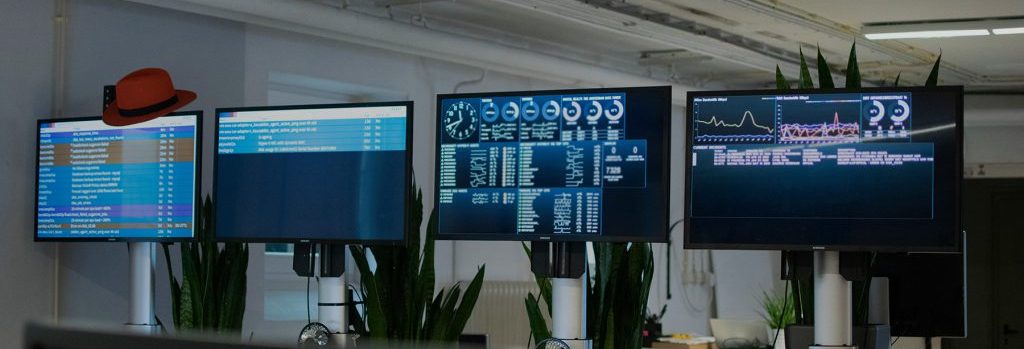
Transitioning from the project to the operational phase
For a project team, the days and weeks leading up to the new online platform going live is an exciting time. We implement the last items on the project backlog, roll out the latest release, test everything vigorously and deliver the go-live runbook in preparation for the big date. Because we have been working closely together following the Scrum framework for the past months, we’ve become a tight-knit unit that counts on each other, where communication channels are short and efficient and everyone knows what is expected of them. Our goal is clear: we are finally going to share what we’ve designed, created and built with the rest of the world.
But what happens after this milestone is reached? The project may be finished but for the platform this is obviously just the beginning. And just like with a car that rolls off the conveyor belt and leaves the factory, we cannot predict what will happen when people take it out for a spin.
While “on the road”, we will encounter (end)users that will start using the platform and that will give feedback that may translate into change requests for the platform. Or an (un)expected increase in the number of users on the platform which demands (automatic) up-scaling of the (virtual) resources to handle that demand. Besides that, the platform’s data has to be sufficiently protected against unauthorized use and the methods and solutions for this may change over time. We may also want to implement a couple of change requests that we still had on the project backlog or build new functionality that we hadn’t thought about during the project phase. The platform also has to remain “fit for purpose” and needs to grow alongside the organization in a healthy and sustainable manner. In short, what we’ve built and delivered must now be managed and maintained. This is what we call the operational phase.

Service Level Agreement
To meet the challenges of the operational phase, we compose a comprehensive Service Level Agreement (SLA) with our clients. In this SLA, we define the scope of the services that INFO provides during this phase. Our primary goal is to ensure reliability, integrity and availability of the platform.
To be able to determine the scope of the services needed during the operational phase, it’s paramount that we start talking with our clients about this phase already at the start of the project. After all, during the operational phase of a platform other questions and challenges come into play than during the project phase.
During those conversations, we will also address the topic of functional application management, or rather, the ongoing development of the platform after the project has ended. We make agreements with our clients about how we will handle change requests for the application or its infrastructure after the last sprint is completed. This could mean that after the launch, we have our software development engineers available for a fixed number of hours per month, so that they can continue working on new functionalities within the platform. Or we gather those change requests together in order to plan new sprints at a later time, possibly with another project team.
It takes some getting used to
Transitioning from working with a (dedicated) project team to the operational phase of a platform after its launch can take some getting used to for clients. After all, they’re switching from working with a group of people that they’ve come to know quite well, their team, to working according to a SLA where things are set in stone. For our clients, this can feel like they’ve traded their agile little speedboat for a cumbersome oil tanker. That’s why INFO’s operational services are organized in a way that provides our clients with the same level of service quality and customization that they’ve gotten used to during the project phase.

But how do you make sure that a platform that was created and built with so much TLC will be managed with the same level of care and dedication? Over here at INFO, we have a couple of guidelines to make sure that we do exactly that:
A comprehensive transfer
In the weeks leading up to the launch, it’s paramount to give the operational team a comprehensive transfer so that they can get more intimately acquainted with the platform. Knowledge sessions, proper documentation, recorded procedures and quality control all play a large role in this. This way, both the platform and the client are prepared for a smooth transition to the operational phase.
Regular operational meetings
By regularly maintaining (scheduled) contact between our operational team and the client, there’s plenty of opportunity to analyze the platform’s usage (load), discuss (alarming) trends and evaluate the quality of the services provided by INFO. These meetings are also a great moment for discussing (large) upcoming changes and their planning and possible impact.
Available 24/7
In the case of a critical malfunction on the platform, engineers have to be available twenty-four hours a day, seven days a week. They make sure that the platform is returned to its operational status as soon as possible.
Regular maintenance
Regularly maintaining the platform ensures that new versions of the platform’s infrastructure components and software (updates, patches, hotfixes), the CI/CD “pipeline”, code artifacts and other dependencies in the software stay up-to-date. This isn’t only important from a security standpoint but also to facilitate further development of the platform at a later stage.
Personal service
Of course, transitioning from the project to the operational phase of your online platform is exciting and maybe even a little scary. But by upholding the guidelines described above, we firmly believe that quality and continuity can also be guaranteed during the operational phase. In addition to these guidelines, INFO also focuses on personal service. We try to do everything in our power to help our clients deal with the challenges the operational phase of their platform might throw at them. Take our service desk, the first point of contact for all our clients, for example.. Just pick up the phone, send us a quick email or use our service portal and you will be in direct contact with our team of engineers that know your organization, your platform and you.